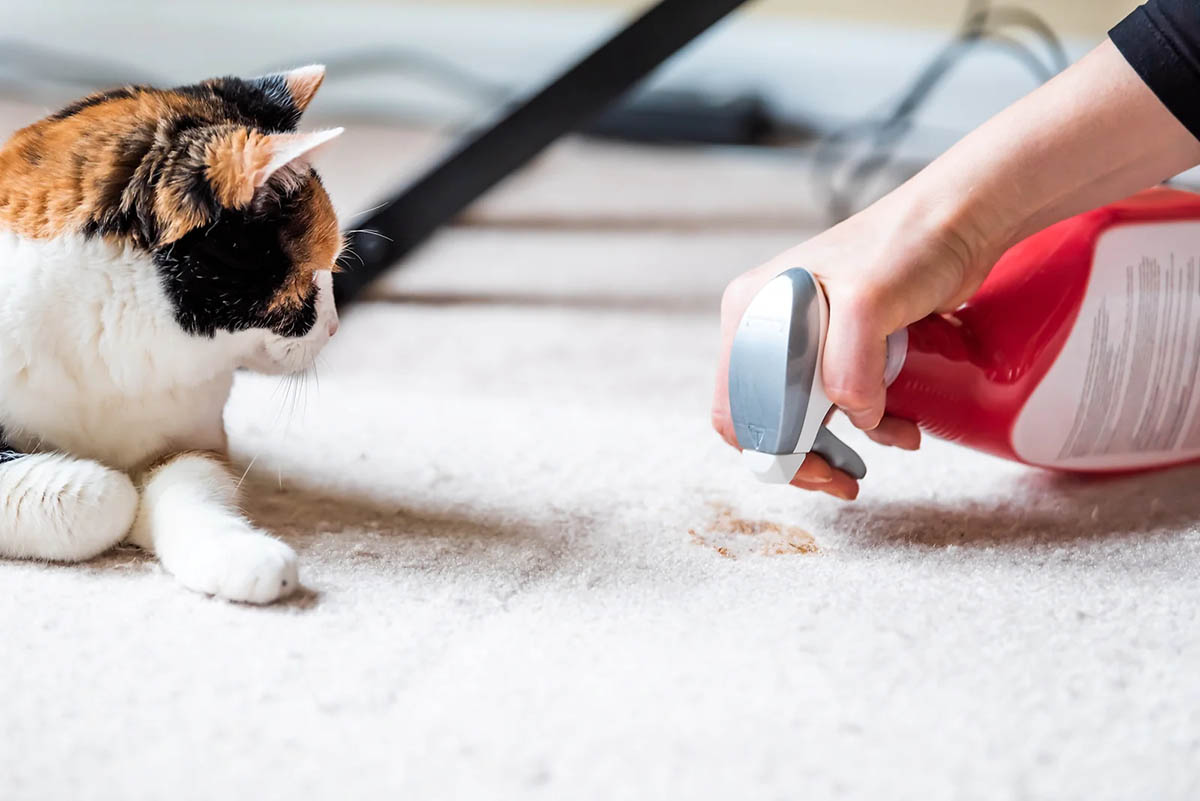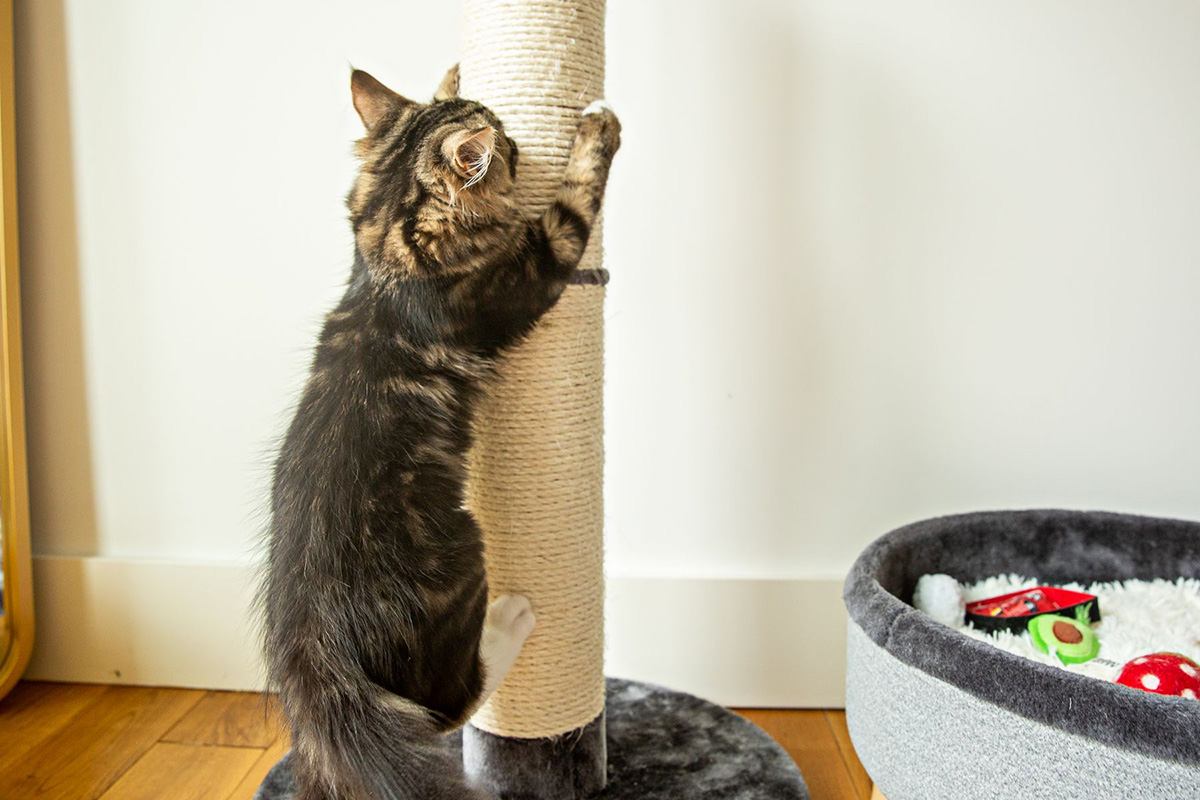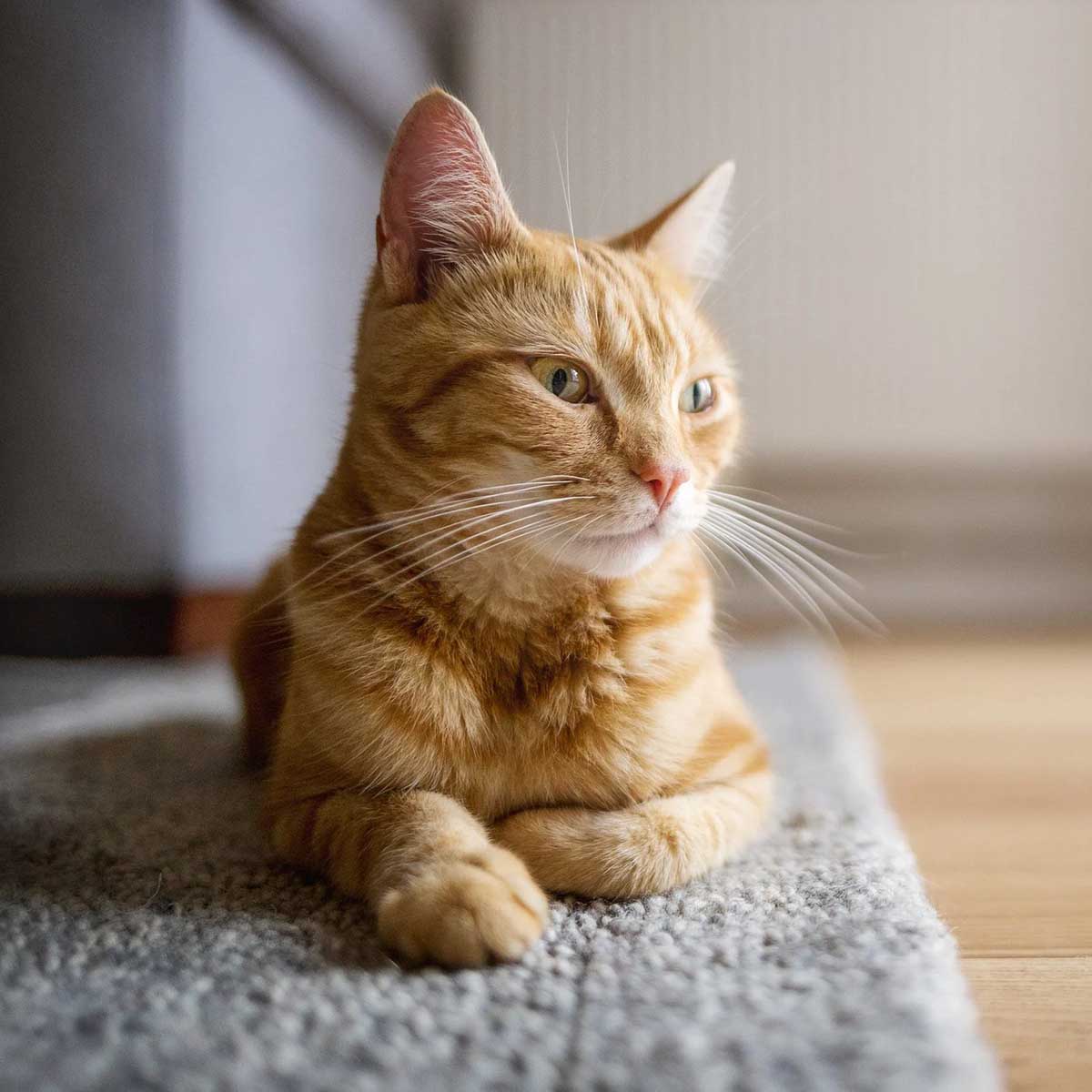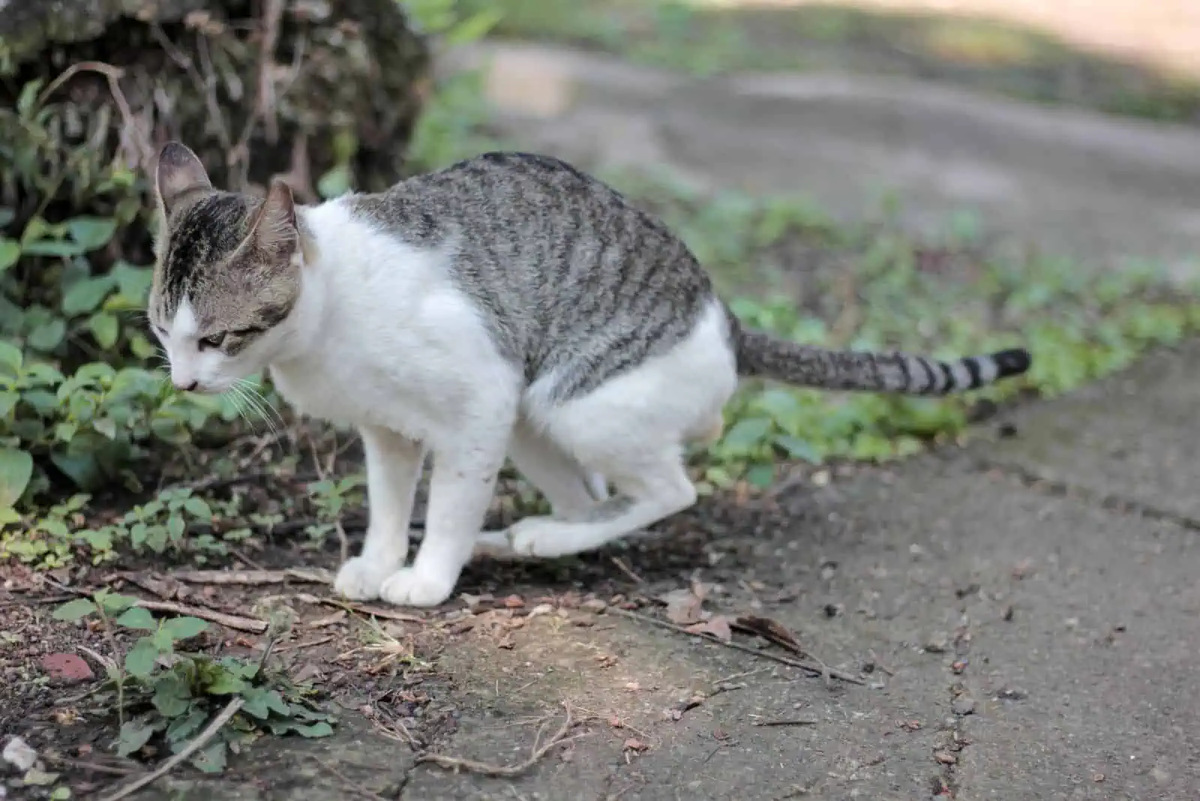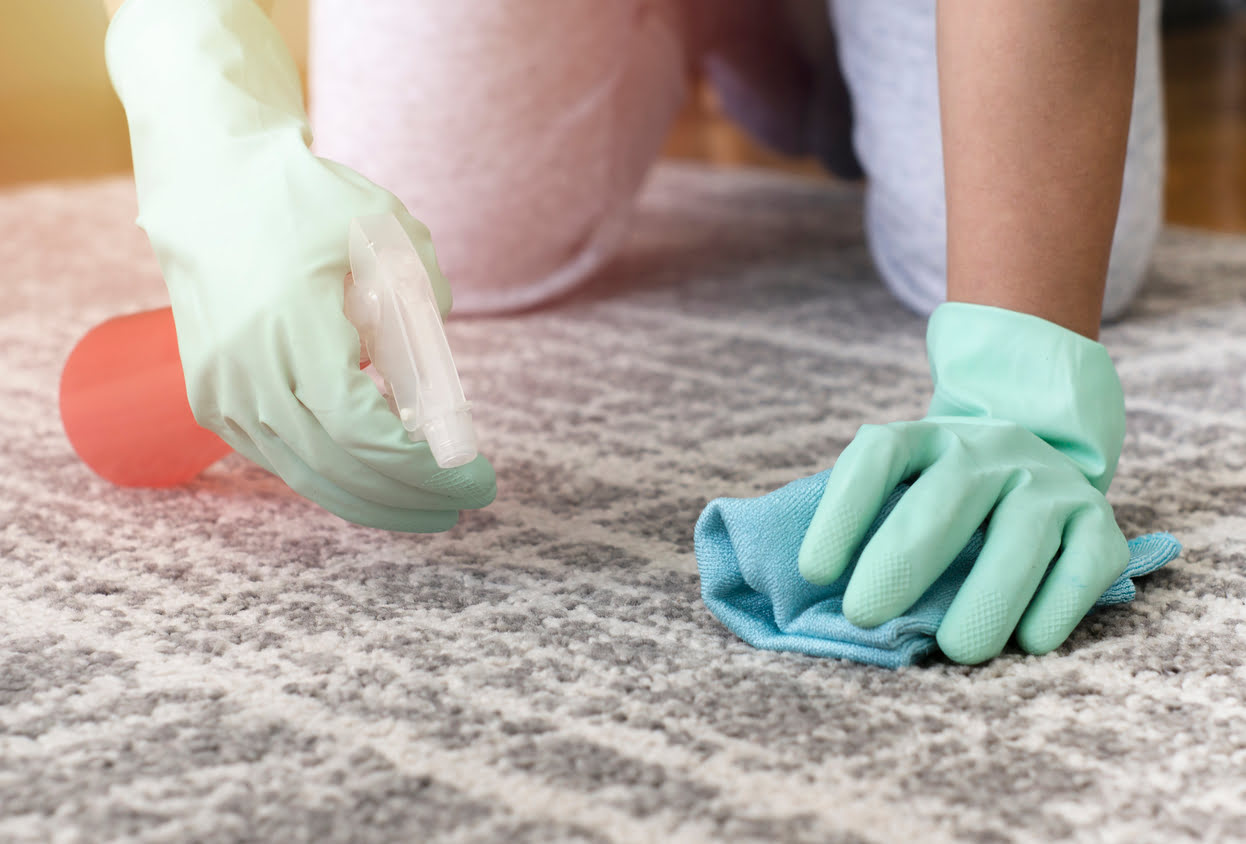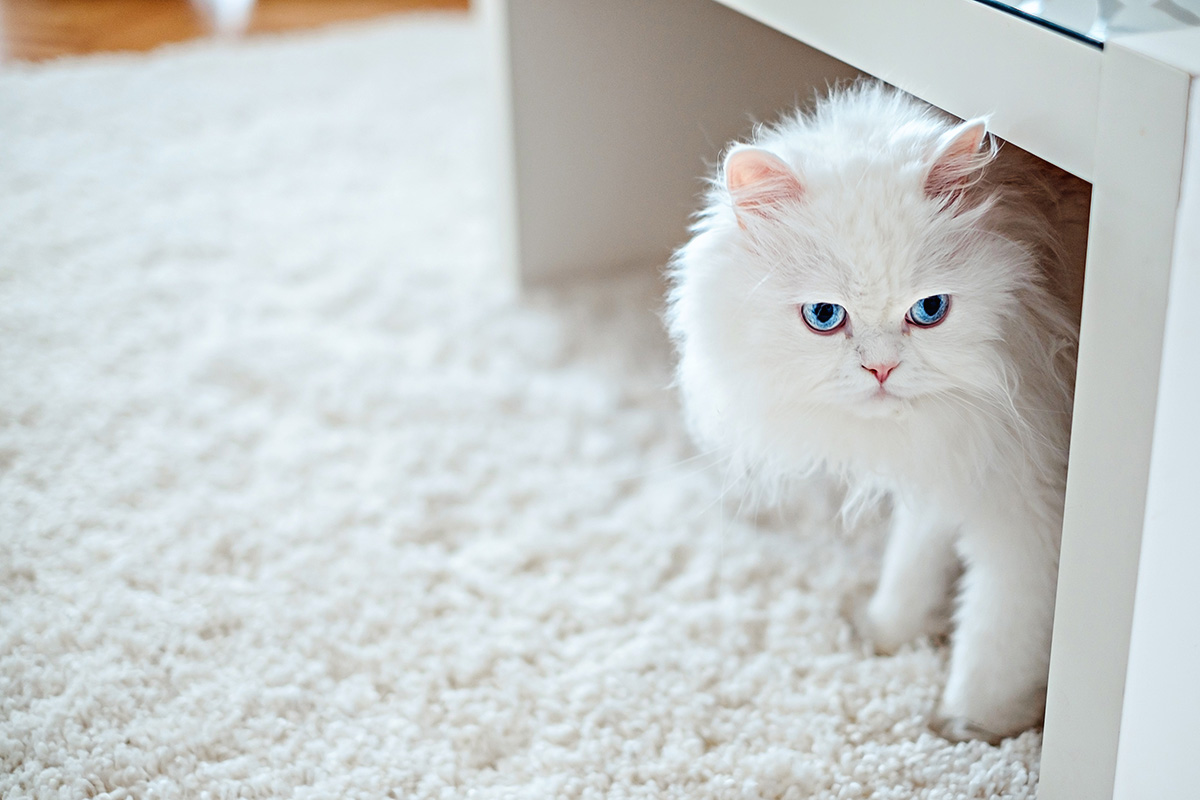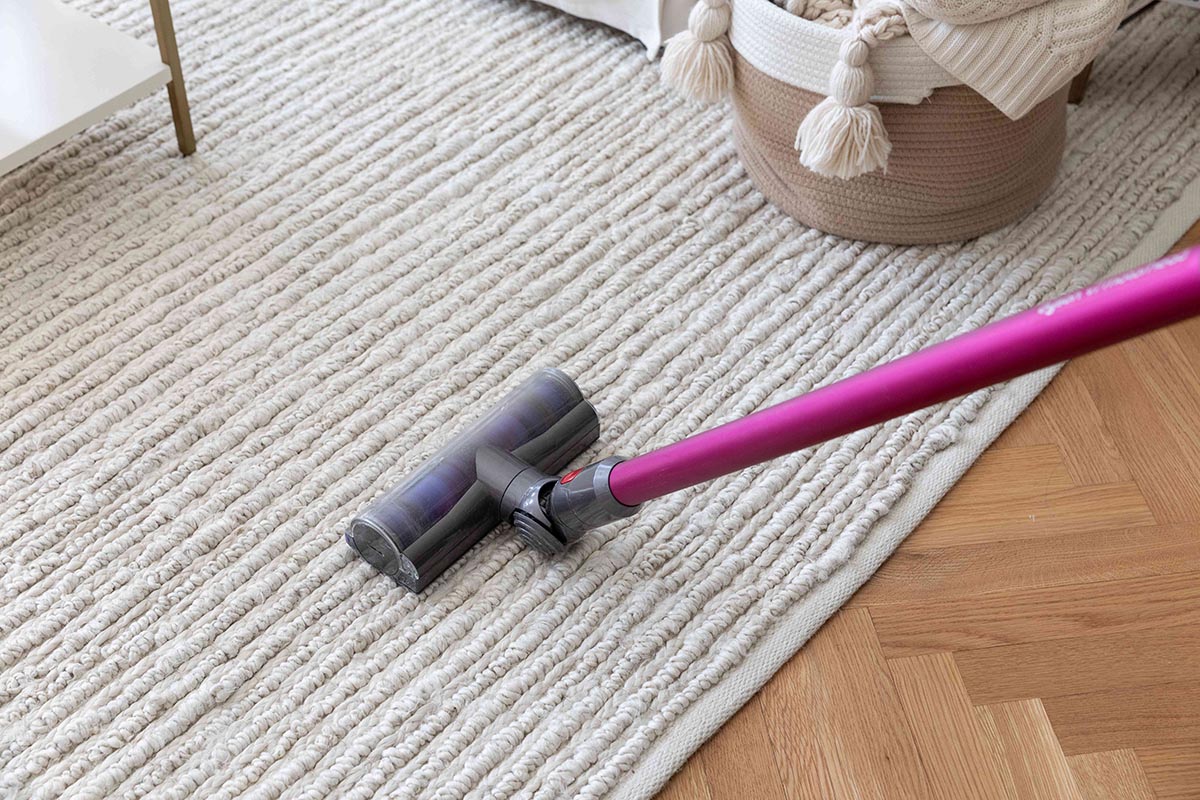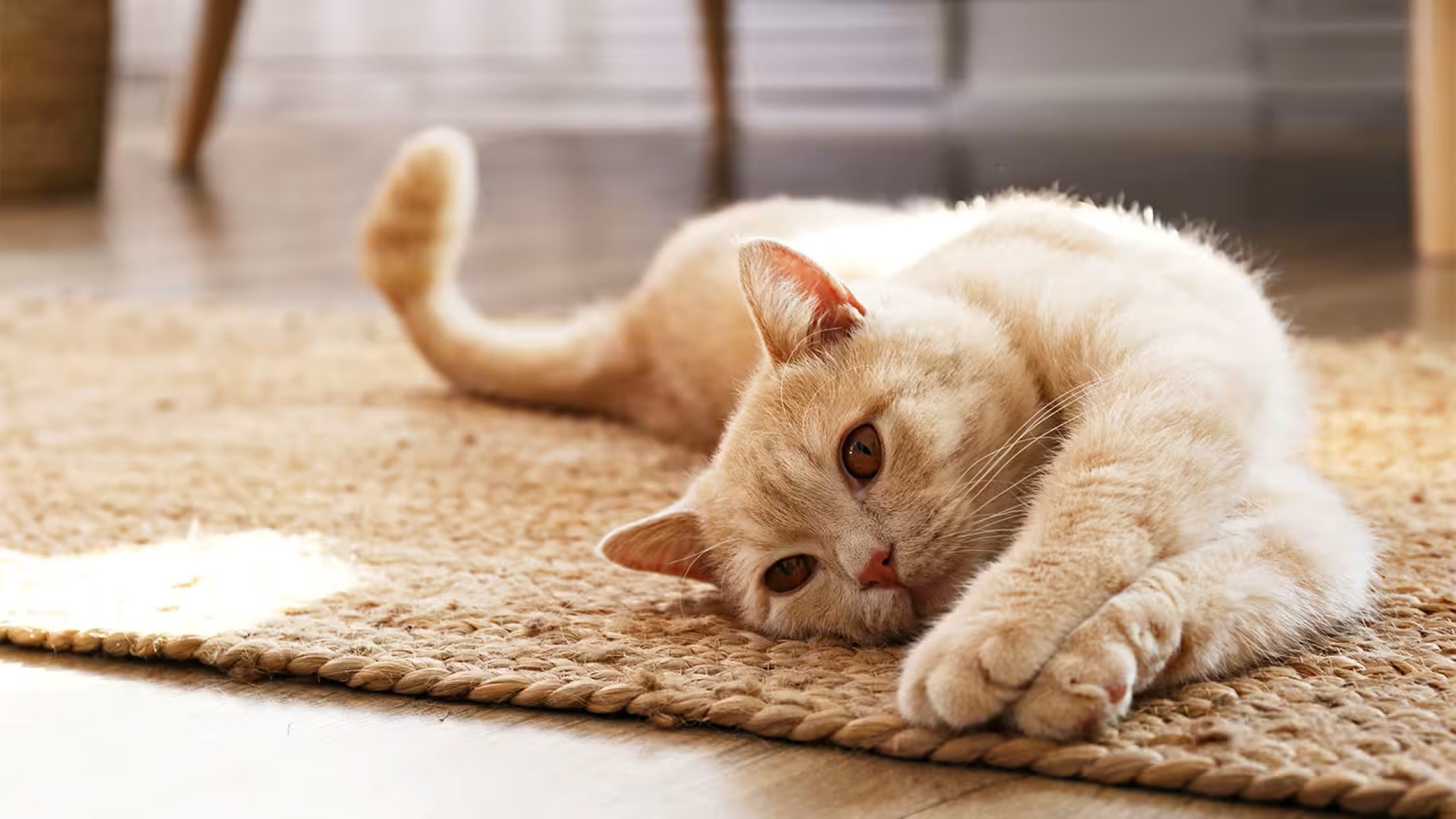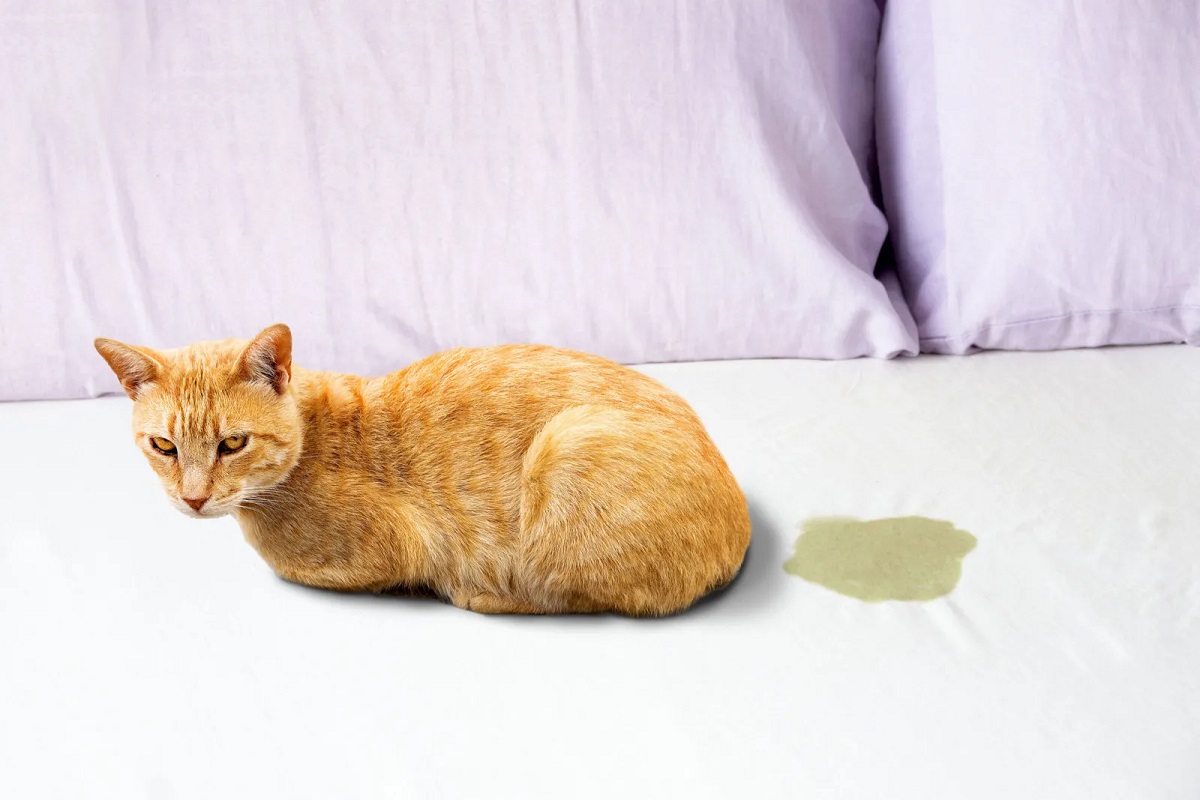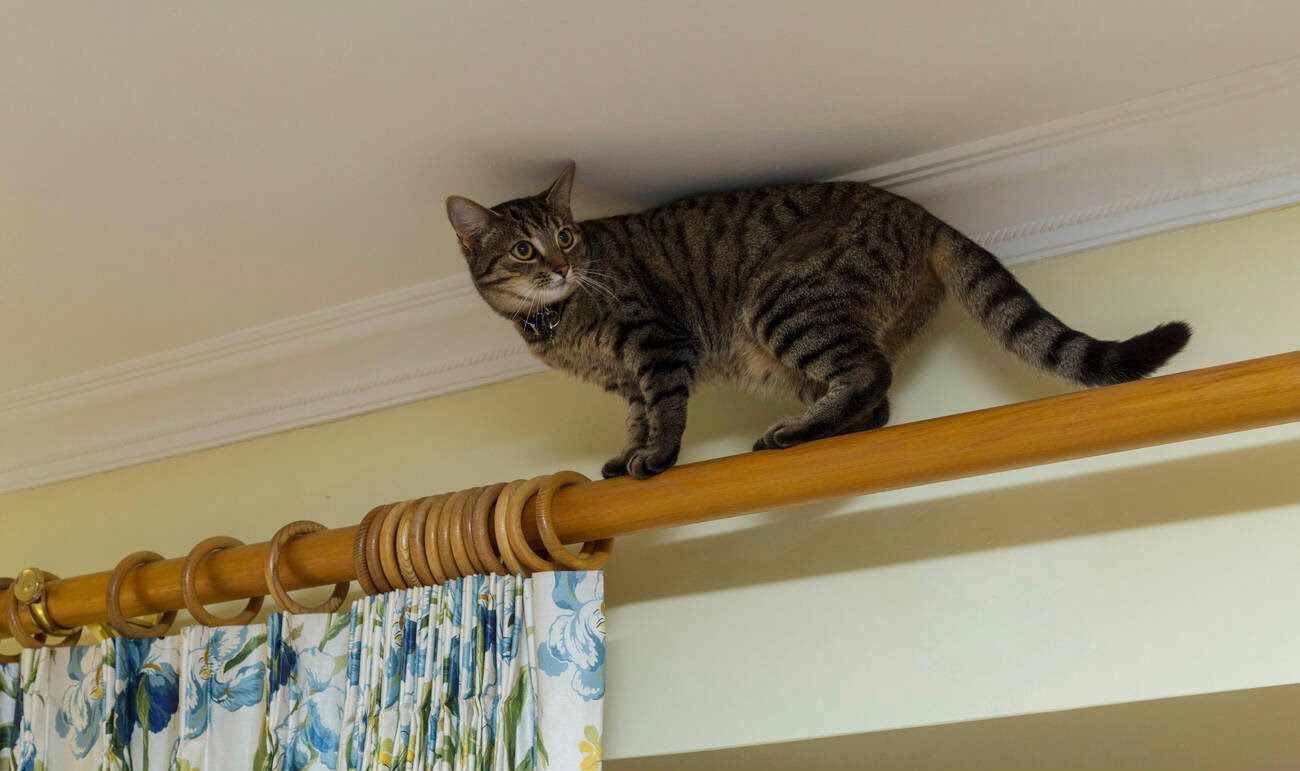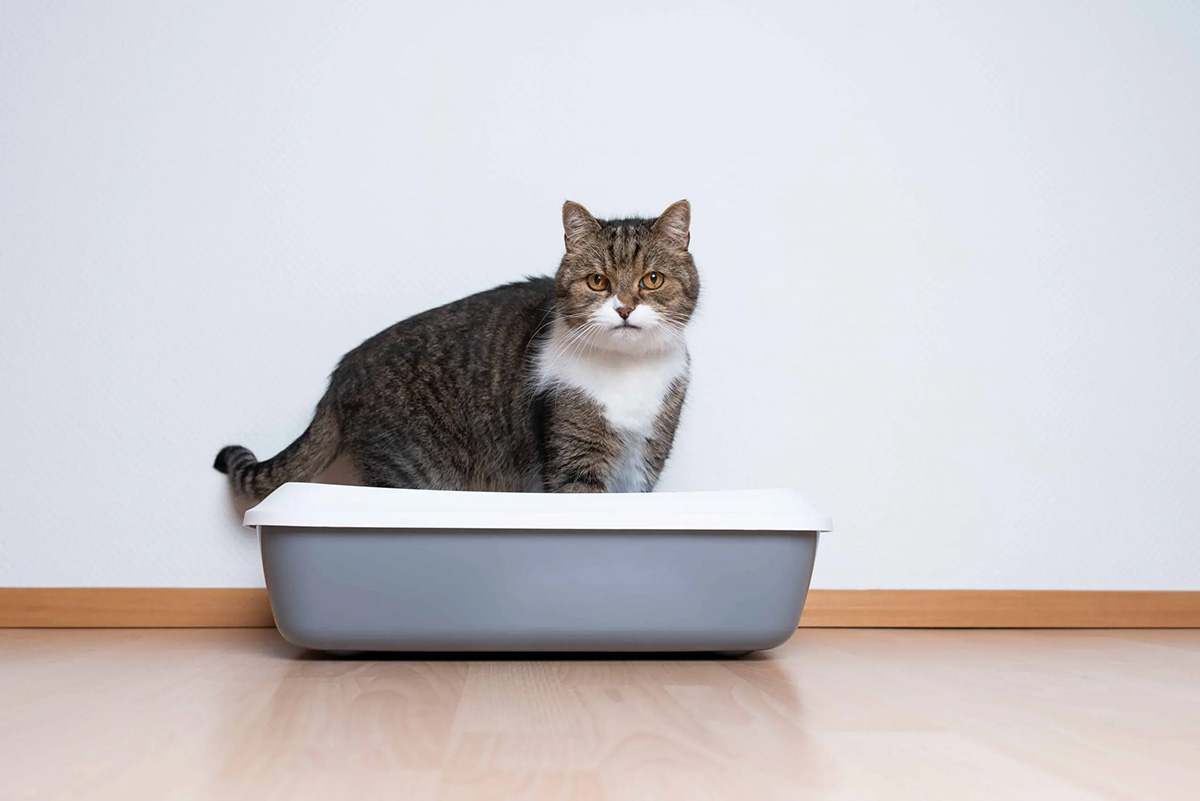

Articles
How To Stop Cat From Pooping On A Carpet
Modified: March 2, 2024
Learn effective techniques to prevent your cat from pooping on the carpet. Read informative articles with expert tips and advice to tackle this common problem.
(Many of the links in this article redirect to a specific reviewed product. Your purchase of these products through affiliate links helps to generate commission for Storables.com, at no extra cost. Learn more)
Introduction
Welcome to our comprehensive guide on how to stop your cat from pooping on the carpet. If you’re a cat owner, you know how frustrating it can be to discover those unwelcome surprises on your pristine carpet. It’s not only unpleasant to clean up, but it can also leave lingering odors and stains. But don’t worry, understanding why your cat is exhibiting this behavior and implementing some simple strategies can help you address and remedy the issue.
First, it’s essential to remember that cats are creatures of habit, with specific preferences when it comes to their litter box. When they refuse to use it and instead choose to deposit their waste on your carpet, there’s likely an underlying reason behind this behavior.
To tackle this problem, we need to delve into the various potential causes, ranging from medical issues to environmental factors. By recognizing these factors, you can tailor your approach to address the specific needs of your cat.
In this guide, we will explore different aspects that can contribute to your cat choosing the carpet over the litter box. We’ll discuss step-by-step methods to resolve the issue and make your home a clean and comfortable environment for your feline friend.
So, let’s dive in and discover how to put an end to your cat’s carpet-pooping habits!
Key Takeaways:
- Understanding the underlying reasons for your cat’s carpet-pooping behavior, such as medical issues, stress, or litter box preferences, is crucial for tailoring effective solutions and creating a conducive environment for proper elimination.
- Providing multiple litter box options, maintaining cleanliness, addressing stress and anxiety, and using deterrents can help redirect your cat’s behavior and prevent future instances of carpet-pooping. Remember, patience and professional help may be necessary for long-term success.
Read more: How To Stop Cats From Pooping In Garden
Understanding Why Cats Poop on the Carpet
If you find your cat pooping on the carpet instead of using the litter box, it’s crucial to understand the reasons behind this behavior. Cats are generally clean animals, and their natural instinct is to use a designated area for eliminating waste. When they deviate from this routine, it typically signifies an underlying issue.
Medical problems may be the primary reason for your cat’s refusal to use the litter box. Conditions such as urinary tract infections, gastrointestinal issues, or constipation can cause discomfort during elimination. If your cat associates the litter box with pain, it may seek alternative places, like the carpet, to alleviate the discomfort.
In some cases, cats may also develop aversions to the litter box due to unpleasant experiences or negative associations. This can occur if the litter box is dirty, in an inconvenient location, or not suitable for your cat’s preferences. Additionally, some cats dislike covered litter boxes or certain types of litter, which can lead them to seek alternative places to defecate.
Stress and anxiety can also play a significant role in your cat’s refusal to use the litter box. Cats are sensitive creatures, and any changes in their environment, such as moving to a new house, the introduction of a new pet, or even changes in their daily routine, can cause them stress. This stress can manifest in various ways, and one common behavior is eliminating outside of the litter box.
It’s essential to consider all these factors when trying to address the issue. By understanding the root cause, you can take appropriate steps to make the necessary changes and encourage your cat to use the litter box again.
In the next sections, we’ll explore different strategies you can use to ensure your cat’s litter box is appealing and suitable for their needs. Keep in mind that every cat is unique, so you may need to try a combination of approaches to find what works best for your feline companion.
Identifying Potential Causes
When your cat starts pooping on the carpet, it’s important to identify and address any potential underlying causes. By pinpointing the root issue, you can take appropriate steps to resolve the problem. Here are some common factors to consider:
- Medical Issues: Before assuming it’s a behavioral issue, rule out any medical problems that may be causing your cat discomfort. Schedule a visit to the veterinarian for a thorough examination. Conditions such as urinary tract infections, gastrointestinal disorders, or constipation can contribute to litter box avoidance.
- Litter Box Problems: Evaluate the litter box itself. Is it clean and well-maintained? Cats are meticulous creatures, and a dirty litter box may discourage them from using it. Ensure you scoop the box daily and change the litter regularly. Consider using unscented litter, as strong fragrances can be off-putting to some cats.
- Litter Box Location: Take a look at where the litter box is placed. Is it in a quiet, low-traffic area? Some cats prefer privacy while using the litter box. Avoid placing it near loud appliances or areas where other pets or children frequent, as this can cause stress for your cat.
- Litter Preferences: Cats can be picky about the type of litter they use. Experiment with different litter textures and materials, such as clumping, non-clumping, or natural alternatives like wood pellets or recycled paper. Observe your cat’s reaction to determine the type they prefer.
- Litter Box Size and Accessibility: Ensure the litter box is large enough for your cat to comfortably move and turn around in. Also, consider any physical limitations your cat may have. For older cats or those with joint issues, a litter box with low sides or an entrance ramp may be necessary.
- Environmental Changes: Cats are sensitive to changes in their environment, which can cause stress and lead to litter box aversion. Evaluate any recent changes such as a move, new pets, or even rearranging furniture. Gradually introduce changes to give your cat time to adjust.
- Emotional Well-being: Cats are social animals and require mental stimulation. Ensure your cat has plenty of playtime, interactive toys, scratching posts, and cozy resting areas. This can help reduce stress and keep your cat mentally and physically satisfied.
By carefully evaluating these potential causes, you can pinpoint any specific factors that may be contributing to your cat’s carpet-pooping behavior. Remember, patience is key during this process, as it may take time and experimentation to find the most effective solution for your furry friend.
Providing Adequate Litter Box Options
When it comes to addressing carpet-pooping behavior in cats, providing adequate litter box options is essential. Cats have their unique preferences, and ensuring their litter boxes meet those preferences can encourage them to use them instead of the carpet. Here are some tips to consider:
- Multiple Litter Boxes: Cats generally prefer having multiple litter boxes available to them. The general rule of thumb is to have one litter box per cat, plus an extra one. This ensures that there are enough options for them to choose from, preventing overcrowding or territorial issues.
- Litter Box Placement: Strategically place the litter boxes in different areas of your home. This allows your cat easy access to a litter box no matter where they are in the house. Additionally, consider placing litter boxes on each floor of a multi-level home to ensure convenience.
- Open and Accessible: Choose open litter boxes without hoods or covers. Some cats feel confined or trapped in covered litter boxes, which can deter them from using them. It’s also important to ensure that the sides of the litter box are low enough for easy entry and exit, especially for older cats or those with mobility issues.
- Litter Box Size: Opt for larger-sized litter boxes to accommodate your cat comfortably. A spacious litter box provides ample room for your cat to move around and dig, making the experience more enjoyable for them.
- Try Different Types of Litter: Experiment with various types of litter to find the one that your cat prefers. Common options include clumping clay litter, non-clumping litter, silica gel crystals, natural alternatives like wood pellets or recycled paper, or even a combination of these. Observe your cat’s reaction and preferences to make the best choice.
- Litter Box Maintenance: Keep the litter box clean and fresh. Scoop it at least once a day, and completely change the litter on a regular basis. Cats appreciate a clean litter box, and a well-maintained one is more likely to be appealing to them.
- Provide a Variety of Substrates: Some cats may have preferences for different types of substrates. Consider offering alternative litter box options that use different materials, such as grass, sand, or pet-friendly artificial turf. Pay attention to your cat’s preferences and adjust accordingly.
By providing a variety of litter box options that are accessible, comfortable, and well-maintained, you increase the likelihood that your cat will choose to use them instead of the carpet. Remember to evaluate your cat’s preferences and make adjustments as needed to ensure their litter box experience is positive and enjoyable.
Ensuring the Litter Box is Clean and Accessible
One of the most important factors in encouraging your cat to use the litter box instead of the carpet is ensuring that the litter box is clean and easily accessible. Cats are clean animals, and they prefer a tidy and convenient place to do their business. Here are some tips to help keep the litter box clean and accessible:
- Regular Scooping: Make it a habit to scoop the litter box at least once a day. This will prevent it from becoming too dirty and smelly, which can deter your cat from using it. Scooping daily also helps you monitor your cat’s litter box habits and ensure they are using it consistently.
- Complete Litter Change: Every few weeks, empty the entire litter box and replace it with fresh litter. This will not only maintain cleanliness but also help eliminate any lingering odors that may be unappealing to your cat. Clumping litter can be sifted for waste removal, extending the life of the litter.
- Use Unscented Litter: Cats have a highly sensitive sense of smell, and some cats may be repelled by strongly scented litters. Opt for unscented litter to avoid any potential aversions. If you prefer a pleasant scent, choose a litter with a natural or mild fragrance that won’t be overwhelming to your cat.
- Keep Litter Level Adequate: Maintain an appropriate depth of litter in the box. Most cats prefer a litter depth of 1.5 to 2 inches. Having too little litter can make it uncomfortable for your cat to dig and cover their waste, while too much litter may feel unstable or difficult to navigate.
- Provide Easy Access: Ensure that your cat can easily access the litter box. If you have an older cat or one with mobility issues, consider providing a ramp or a litter box with lower sides for effortless entry and exit. The easier it is for your cat to use the litter box, the more likely they are to do so consistently.
- Consider litter box liners: Some cats prefer litter box liners as they make cleaning the box easier. However, not all cats appreciate them, so observe your cat’s reaction. If you use liners, make sure they are securely fastened and don’t bunch up or tear, as this can create an unpleasant experience for your cat.
- Place litter mats or trays: To minimize litter tracking, place litter mats or trays around the litter box to capture any litter that may be stuck to your cat’s paws. This will help keep your floors clean and reduce the chances of your cat tracking litter throughout the house, possibly leading to carpet-pooping incidents.
By keeping the litter box clean, well-maintained, and easily accessible, you create an inviting environment for your cat to use the litter box consistently. Remember that regular cleaning is key to ensure your cat’s comfort and encourage proper litter box usage.
Make sure the litter box is clean and easily accessible. Use a litter that your cat prefers. Consider placing a deterrent, like double-sided tape or aluminum foil, on the carpet to discourage them from pooping there.
Read more: How To Stop Cats From Pooping On The Floor
Addressing Stress and Anxiety in Cats
Stress and anxiety can contribute to your cat’s decision to poop on the carpet instead of using the litter box. Cats are sensitive creatures and can be easily affected by changes in their environment or routine. It’s important to address these underlying stressors to help prevent carpet-pooping incidents. Here are some strategies to alleviate stress and anxiety in cats:
- Maintain a Stable Environment: Cats thrive in a stable and predictable environment. Minimize changes as much as possible, and when changes are necessary, introduce them gradually. This includes new furniture, rearranging rooms, or introducing new pets. Stability and routine can help reduce stress.
- Create Safe Spaces: Provide your cat with designated safe spaces where they can retreat to when they need some alone time or want to relax. These spaces should be quiet, comfortable, and equipped with cozy beds or blankets. Limit access to these spaces to ensure they remain a calm and secure area for your cat.
- Offer Vertical Spaces: Cats love having vertical spaces to climb and observe their surroundings. Install cat trees, shelves, or provide access to high surfaces such as window perches. Vertical spaces allow them to feel more in control and alleviate stress by giving them a sense of security and territory.
- Interactive Playtime: Engage in daily interactive play sessions with your cat. This helps provide mental and physical stimulation while strengthening your bond. Use toys that mimic prey-like movements to stimulate your cat’s natural hunting instincts. Playtime reduces stress, releases energy, and helps prevent boredom.
- Pheromone Therapy: Consider using products like synthetic appeasing pheromone diffusers or sprays, such as Feliway, which can help create a calm and reassuring environment for your cat. These products mimic natural cat pheromones and can reduce stress and anxiety.
- Behavioral Enrichment: Provide a variety of toys, scratching posts, and puzzle feeders to keep your cat mentally stimulated. This can help prevent boredom and redirect any stress or anxiety into positive outlets. Rotate toys regularly to maintain your cat’s interest.
- Establish a Routine: Cats thrive on routine and predictability. Create a daily routine for feeding, playtime, and litter box cleaning. Familiarity and consistency can help reduce stress and provide a sense of security for your cat.
- Consider Calming Supplements: Consult with your veterinarian about the possibility of using calming supplements or medications for your cat. These can help reduce anxiety in times of stress or during transitional periods. However, always consult with a professional before administering any medications to your cat.
By implementing these strategies, you can help create a stress-free environment for your cat, reducing the likelihood of carpet-pooping incidents. Remember that each cat is unique, and it may take some experimentation to find the best approach for your feline companion. Patience and understanding are key in addressing stress and anxiety in cats.
Using Deterrents to Prevent Cat Pooping on Carpet
If your cat continues to poop on the carpet despite your efforts to address the underlying causes, using deterrents can be an effective strategy to discourage this behavior. Deterrents work by making the carpet an unpleasant or undesirable place for your cat to eliminate. Here are some deterrent techniques you can try:
- Double-Sided Tape: Place strips of double-sided tape on the carpet where your cat tends to poop. Cats dislike the sticky sensation on their paws, which can discourage them from using that area as a bathroom.
- Aluminum Foil: Cats dislike the texture and sound of aluminum foil. Place sheets of foil on the carpet to create an uncomfortable surface for your cat. Keep in mind that some cats may try to play with or chew on the foil, so monitor their behavior closely.
- Scents Cats Dislike: Cats have sensitive noses and are repelled by certain smells. Sprinkle citrus peels, coffee grounds, or other scents that cats dislike around the areas where your cat has been pooping. This can act as a natural deterrent and discourage them from choosing the carpet as their bathroom spot.
- Use Pet-Proof Sprays: There are pet-proof sprays available in the market that have strong scents or bitter tastes. Spray these products on the carpet to make it unappealing to your cat. Always test the spray in a small inconspicuous area of the carpet to ensure it doesn’t cause discoloration or damage.
- Utilize Motion-Activated Devices: Motion-activated devices can startle cats when they approach the carpet. For example, you can set up a motion-activated air canister or a sound-emitting device near the areas where your cat has been pooping. The sudden burst of air or unexpected noise can deter your cat from continuing the behavior.
- Increase the Appeal of the Litter Box: Make the litter box more appealing by adding catnip or treats nearby. Positive associations with the litter box can encourage your cat to choose it over the carpet.
- Block Access to Problem Areas: If you can identify specific areas where your cat tends to poop on the carpet, block off those areas temporarily. Use baby gates or furniture to prevent your cat from accessing those spots. This restriction can help redirect your cat’s behavior towards the litter box.
- Properly Clean Carpet Accident Areas: It’s essential to clean any soiled carpet areas thoroughly to remove any lingering odors. Use an enzymatic cleaner specifically designed for removing pet odors to ensure that your cat isn’t attracted back to those areas.
Remember, while deterrents can be effective, it’s important to provide alternative positive options for your cat, such as an appealing litter box environment. Be patient and consistent with your approach, as it may take time for your cat to relearn proper elimination habits.
If the carpet-pooping behavior persists despite your efforts, it’s advisable to consult with a veterinarian or a certified animal behaviorist for further guidance and assistance in addressing the issue.
Seeking Professional Help if Needed
If you have tried various strategies and your cat continues to poop on the carpet, it may be time to seek professional help. Consulting with a veterinarian or a certified animal behaviorist can provide valuable insights and guidance to address the issue effectively.
A veterinarian will be able to rule out any underlying medical conditions that may be contributing to your cat’s inappropriate elimination behavior. They can conduct a thorough examination, perform necessary tests, and provide treatment options if any medical issues are identified.
An animal behaviorist specializes in understanding and modifying animal behavior, including issues related to litter box usage. They can assess your cat’s behavior, environment, and interactions to identify any underlying issues contributing to the carpet-pooping behavior. They will then create a tailored behavior modification plan to address the problem.
When seeking professional help, be prepared to provide detailed information about your cat’s behavior, any changes in the household, and the specific instances of carpet-pooping. The more information you can provide, the better equipped the professional will be to provide appropriate advice and solutions.
It’s important to approach professional assistance with an open mind and a willingness to follow their recommendations. They may suggest changes to your cat’s environment, litter box setup, or behavior modification techniques that can help address the issue. Consistency and patience are key throughout the process, as it may take time for your cat to adjust to any changes or training techniques.
Remember, professional help is available for a reason. They have the knowledge and experience to analyze your specific situation and provide you with targeted strategies to resolve the carpet-pooping problem. Don’t hesitate to reach out to them if you feel overwhelmed or if the issue persists despite your best efforts.
In some cases, medication may be recommended as part of the treatment plan, especially if stress or anxiety is a significant contributing factor. Medication can help reduce your cat’s anxiety and support behavioral modification efforts. Always follow the professional’s advice and consult with them before administering any medications to your cat.
By seeking professional help, you can gain the expertise and guidance you need to effectively address and resolve the carpet-pooping issue, ensuring a happier and healthier environment for both you and your feline companion.
Conclusion
Dealing with a cat who consistently poops on the carpet can be frustrating, but with patience and the right approach, you can successfully redirect this behavior and create a litter box habit for your feline friend. It’s important to understand that cats have their own preferences and unique needs when it comes to their elimination habits.
Throughout this comprehensive guide, we have explored the potential causes behind your cat’s carpet-pooping behavior, such as medical issues, litter box problems, stress, and anxiety. By identifying these underlying factors, you can tailor your approach to address the specific needs of your cat and create a conducive environment for proper elimination.
We have discussed the importance of providing adequate litter box options, ensuring cleanliness and accessibility, and addressing stress and anxiety through environmental enrichment and behavior modification. Additionally, we explored the use of deterrents to discourage your cat from choosing the carpet as their bathroom spot.
However, if despite your best efforts the problem persists, it may be necessary to seek professional help. A veterinarian or a certified animal behaviorist can provide valuable expertise and guidance, conducting thorough assessments and creating personalized strategies to tackle the issue.
Remember, consistency, patience, and open-mindedness are essential when working with your cat to modify their behavior. It may take time and trial-and-error to find what works best for your furry companion, but with dedication and understanding, you can overcome the carpet-pooping challenge.
Lastly, always remember to approach the issue with compassion and kindness. Punishment or scolding will only worsen the problem and damage your bond with your cat. Focus on positive reinforcement, reward-based training, and creating a supportive environment.
By implementing the strategies and techniques outlined in this guide, you can help your cat form good litter box habits and prevent any future instances of carpet-pooping. Be persistent, keep an eye on your cat’s wellbeing, and celebrate the progress they make along the way.
With your commitment and love, you can create a harmonious living space where your cat feels comfortable and content, ensuring a happy and healthy relationship for both of you.
Frequently Asked Questions about How To Stop Cat From Pooping On A Carpet
Was this page helpful?
At Storables.com, we guarantee accurate and reliable information. Our content, validated by Expert Board Contributors, is crafted following stringent Editorial Policies. We're committed to providing you with well-researched, expert-backed insights for all your informational needs.
